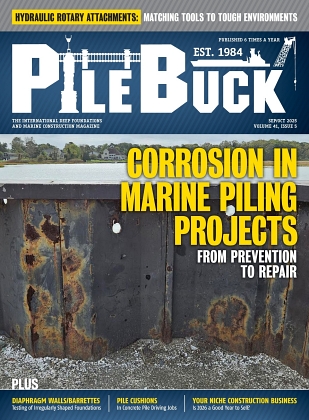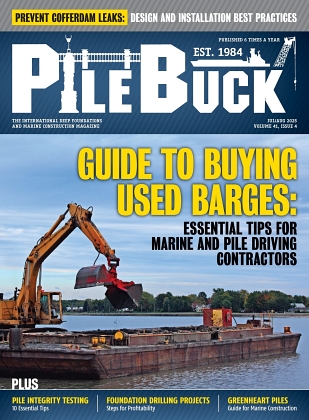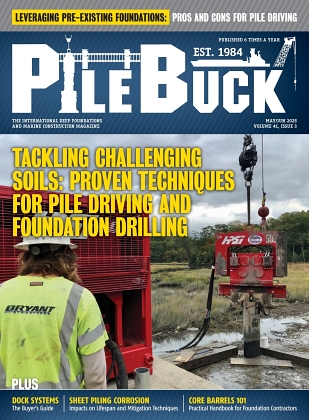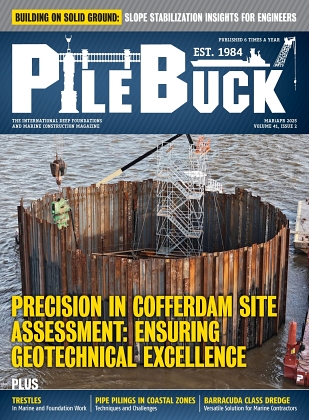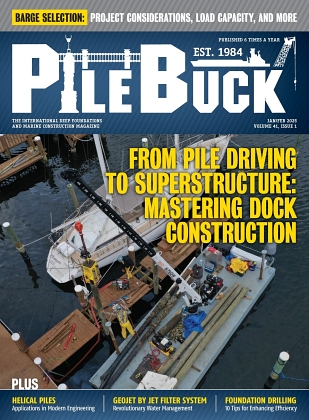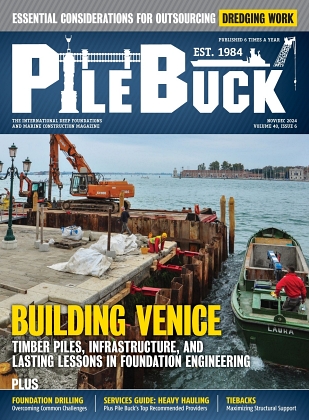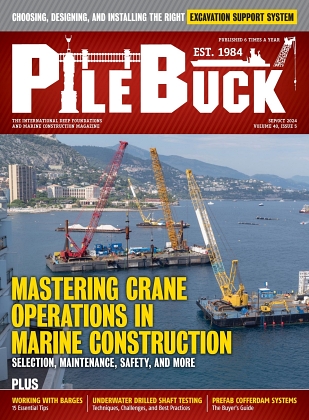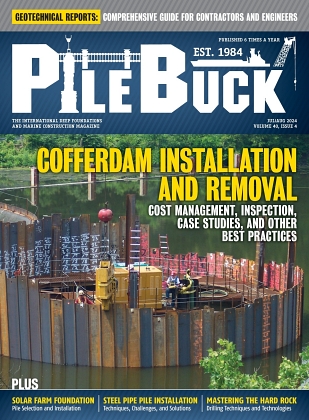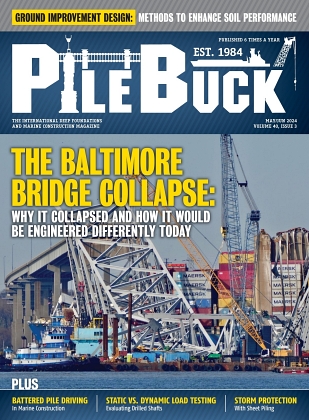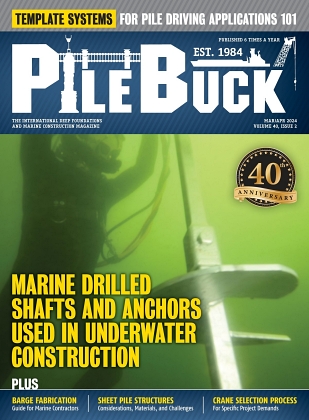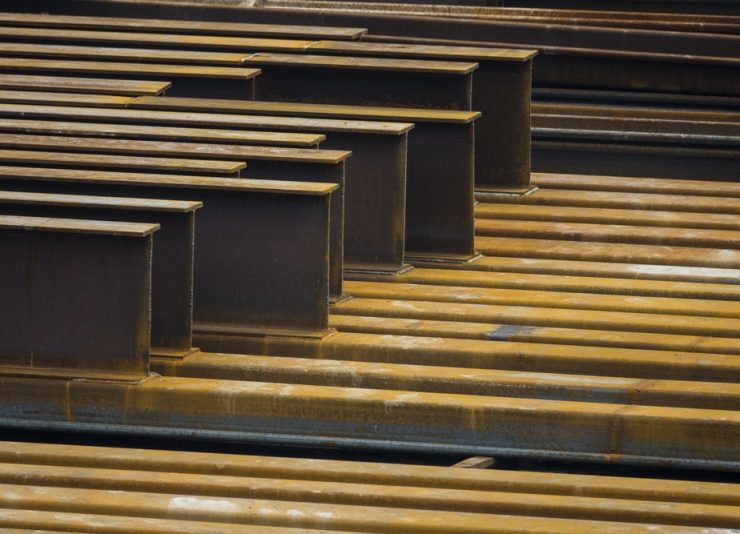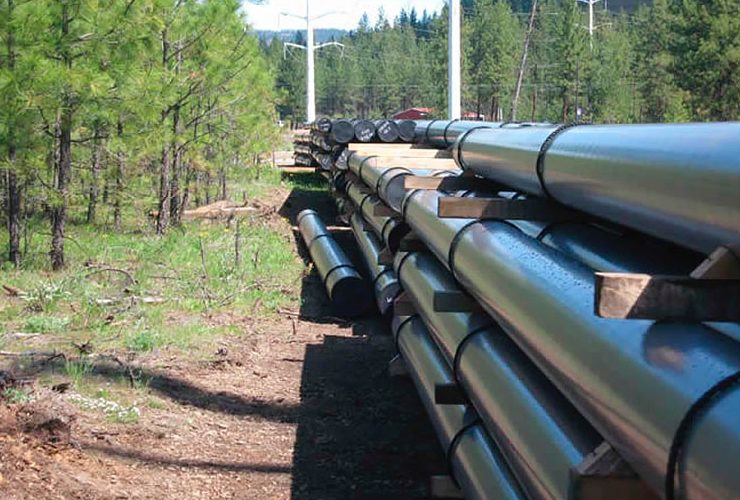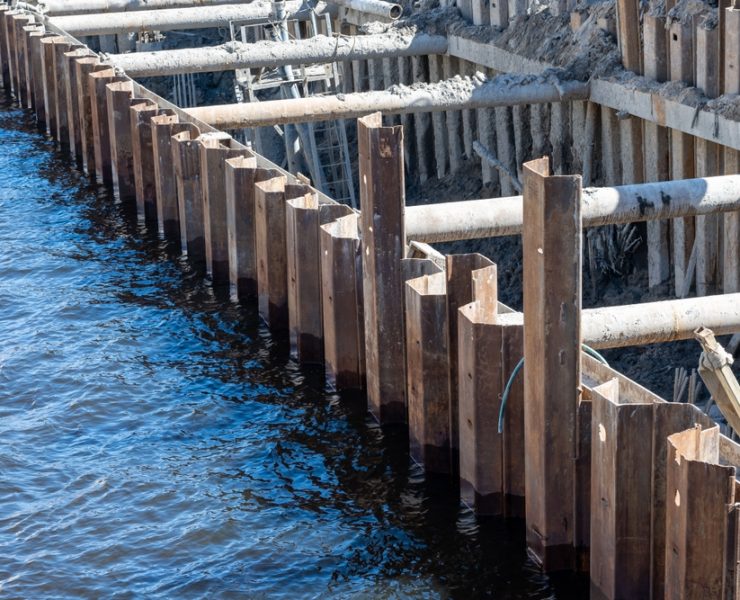The Impact of Corrosion on Sheet Piling Lifespan: Mitigation Techniques


View the complete article here.
Corrosion poses a persistent and formidable challenge to the longevity of sheet piling—especially in marine and coastal environments where steel is relentlessly exposed to saltwater, oxygen, and dynamic environmental conditions. As infrastructure projects expand across the U.S.—driven by demands for resilient ports, seawalls, and flood defenses—understanding and mitigating corrosion’s effects is essential for marine contractors and engineers. This guide discusses how corrosion impacts sheet piling lifespan, explores the underlying mechanisms, and provides a robust set of mitigation techniques to ensure durable, long-lasting foundations.
The Corrosion Challenge
Corrosion is an electrochemical process where steel sheet piling reacts with its surroundings, forming rust that gradually weakens the material. In marine settings, this degradation accelerates due to several key factors:
- Saltwater exposure: High chloride concentrations in seawater penetrate the steel’s protective oxide layer, initiating pitting corrosion that can erode material at rates of up to 0.5 mm per year in aggressive tidal zones. This localized damage creates weak points that compromise structural integrity over time.
- Tidal zones and splash effects: The alternating wet and dry cycles in the splash zone, where waves intermittently submerge and expose the piling, intensify corrosion. This cyclic action leads to accelerated rust formation, particularly at the waterline—where oxygen availability peaks.
- Microbial activity: Sulfate-reducing bacteria thrive in anaerobic sediments, such as harbor muds, producing hydrogen sulfide that accelerates steel deterioration. This biogenic corrosion can increase degradation rates by 20-30% in oxygen-deprived zones.
- Mechanical stress and abrasion: Wave action, currents, and the weight of supported structures impose mechanical stress that can crack protective coatings or abrade surfaces—exposing fresh steel to corrosive elements. Debris impacts further exacerbate wear in high-traffic marine areas.
Without effective countermeasures, corrosion can drastically reduce a sheet piling’s design life—from an expected 50-75 years to as little as 20-30 years—resulting in expensive repairs, safety hazards, or premature replacement. Industry reports from the U.S. Army Corps of Engineers in 2024 noted that corrosion-related issues accounted for nearly one-third of marine sheet piling maintenance costs—highlighting the critical need for proactive management.
Impact on Lifespan
The lifespan of sheet piling is intricately linked to the rate and extent of corrosion, which varies depending on environmental conditions and material properties. In low-corrosion inland freshwater environments, steel sheet piling can endure for 75-100 years with minimal intervention—thanks to reduced chloride and oxygen exposure. However, in high-salinity marine zones—such as along the Gulf Coast or Atlantic seaboard—lifespan can plummet to 20-30 years without protection, with some extreme cases dropping below 15 years in highly aggressive conditions.
Corrosion not only thins the steel, reducing its load-bearing capacity, but also weakens interlocks—increasing the risk of structural failure during storms, high tides, or heavy loading. For instance, inspections of aging seawalls in 2024 revealed that corroded interlocks failed under hurricane surge pressures—necessitating urgent reinforcements and underscoring the need for tailored corrosion strategies to preserve longevity and ensure safety.

Mitigation Techniques
To combat corrosion and extend the service life of sheet piling, contractors can implement a variety of proven techniques—each tailored to specific environmental and project demands:
- Protective coatings: Applying high-performance coatings such as epoxy, polyurethane, or zinc-rich primers creates a physical barrier against moisture, salts, and oxygen. Zinc-rich coatings provide galvanic protection by sacrificing themselves to protect the steel, with studies indicating a 40% reduction in corrosion rates when properly applied. For optimal results, reapply coatings every 10-15 years in harsh marine environments—using sandblasting to remove old layers and ensure adhesion. In cases where corrosion leads to section loss or spalling in concrete elements adjoining sheet piling, effective concrete repair in marine environments is essential for restoring durability and performance.
- Cathodic protection: This electrochemical method uses sacrificial anodes (e.g., zinc, aluminum, or magnesium) or impressed current systems to make the piling a cathode, preventing rust formation. Sacrificial anodes are cost-effective for smaller projects—while impressed current systems, powered by solar panels in remote sites, offer precise control and have been shown to extend pile life by 20-30 years when paired with regular monitoring and anode replacement.
- Material selection: Choosing corrosion-resistant alloys—such as weathering steel, which forms a protective patina—or duplex stainless steel, which resists pitting, can significantly enhance durability.
- Design adjustments: Increasing wall thickness or employing double-sheet piling configurations in high-corrosion zones provides a buffer against degradation. Angling piles to minimize exposure to tidal splash zones or adding sacrificial thickness at critical areas like interlocks can further enhance resistance. Engineers can use finite element analysis to optimize these designs, ensuring they align with load and environmental demands.
- Regular inspections: Conducting biannual or annual inspections using ultrasonic testing, magnetic particle inspection, or visual assessments helps detect early signs of corrosion—such as pitting, interlock wear, or coating failure.
- Environmental controls: Installing cathodic shielding to protect against stray currents or using dewatering techniques to limit water contact during temporary works can reduce corrosion risks. In marine projects, deploying silt curtains or sediment barriers minimizes sediment-related microbial activity—while controlled backfill with non-corrosive materials like clean sand can further protect lower sections.
- Corrosion inhibitors: Applying chemical inhibitors, such as phosphate or molybdate compounds, to the steel surface can slow the electrochemical reaction. These are particularly useful in temporary installations or as a supplementary measure, with application during installation offering an additional layer of protection.
Best Practices for Implementation
To effectively implement these mitigation strategies, consider the following best practices:
- Site-specific planning: Conduct detailed geotechnical and environmental surveys to assess salinity levels, tidal ranges, microbial activity, and current patterns. This data informs the selection of the most suitable mitigation methods and materials for each project site.
- Collaborate with corrosion experts: Partner with materials engineers or corrosion specialists to design and oversee protection systems, ensuring compliance with standards like ASTM G57 or NACE SP0169. Their expertise can prevent costly oversights in complex marine environments.
- Budget for ongoing maintenance: Allocate 5-10% of the initial project budget for corrosion management—including inspections, coating reapplications, and anode replacements. This proactive investment prevents larger expenses from unexpected failures.
- Leverage advanced technology: Utilize drones equipped with thermal imaging or remote-operated vehicles (ROVs) for hard-to-reach marine inspections, improving safety and accuracy. Real-time monitoring systems with corrosion sensors can provide continuous data, enabling rapid response to emerging issues.
- Train crews: Ensure onsite personnel are trained in corrosion detection and mitigation techniques, such as recognizing pitting or applying coatings correctly, to maintain consistent protection throughout the project lifecycle.
View the complete article here.
How does corrosion affect sheet piling lifespan?
Corrosion weakens steel and interlocks, reducing lifespan from 50–75 years to as little as 20–30 years in aggressive marine environments.
What are effective ways to prevent corrosion on sheet piling?
Use protective coatings, cathodic protection, corrosion-resistant materials, and regular inspections to extend service life.

